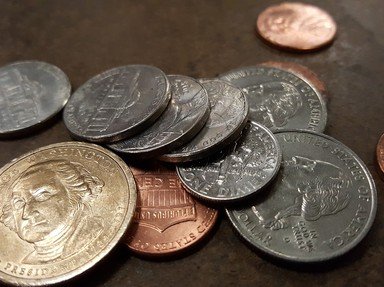Quiz Answer Key and Fun Facts
1. Which war caused the economic upheaval that was a major reason for the creation of the five cent coin?
2. While the US five cent coin (obviously) contains nickel, which other metal is an even larger part of its composition?
3. On which other 19th century coin would one see a shield similar to that found on the first circulating five cent coin, the Shield Nickel?
4. What was Josh Tatum accused of doing to Liberty Head Nickels that led to him being on trial?
5. Did the mint gradually increase production of the Liberty head Nickel with the largest number of coins being made in 1913, the final year of its production?
6. Like some other US coins, a change was made to the Buffalo Nickel during its first year of production. What change was made?
7. To a zoo in which city did James Fraser go to find the American bison that would be the model for the bison on the reverse of the Buffalo Nickel?
8. During the World War Two years, the usual composition of the nickel changed. Along with silver and copper, which other metal was used?
9. Which particular mint mark appeared for the first time on US coins during World War Two on the Jefferson Nickel?
10. For 2004 and 2005, Jefferson Nickels sported special designs. Which event's 200th anniversary was the inspiration of these designs?
Source: Author
bernie73
This quiz was reviewed by FunTrivia editor
Bruyere before going online.
Any errors found in FunTrivia content are routinely corrected through our feedback system.
